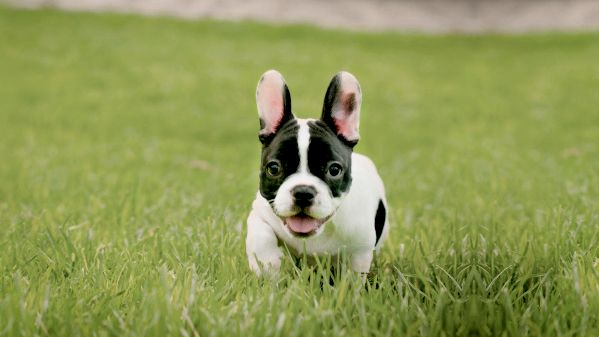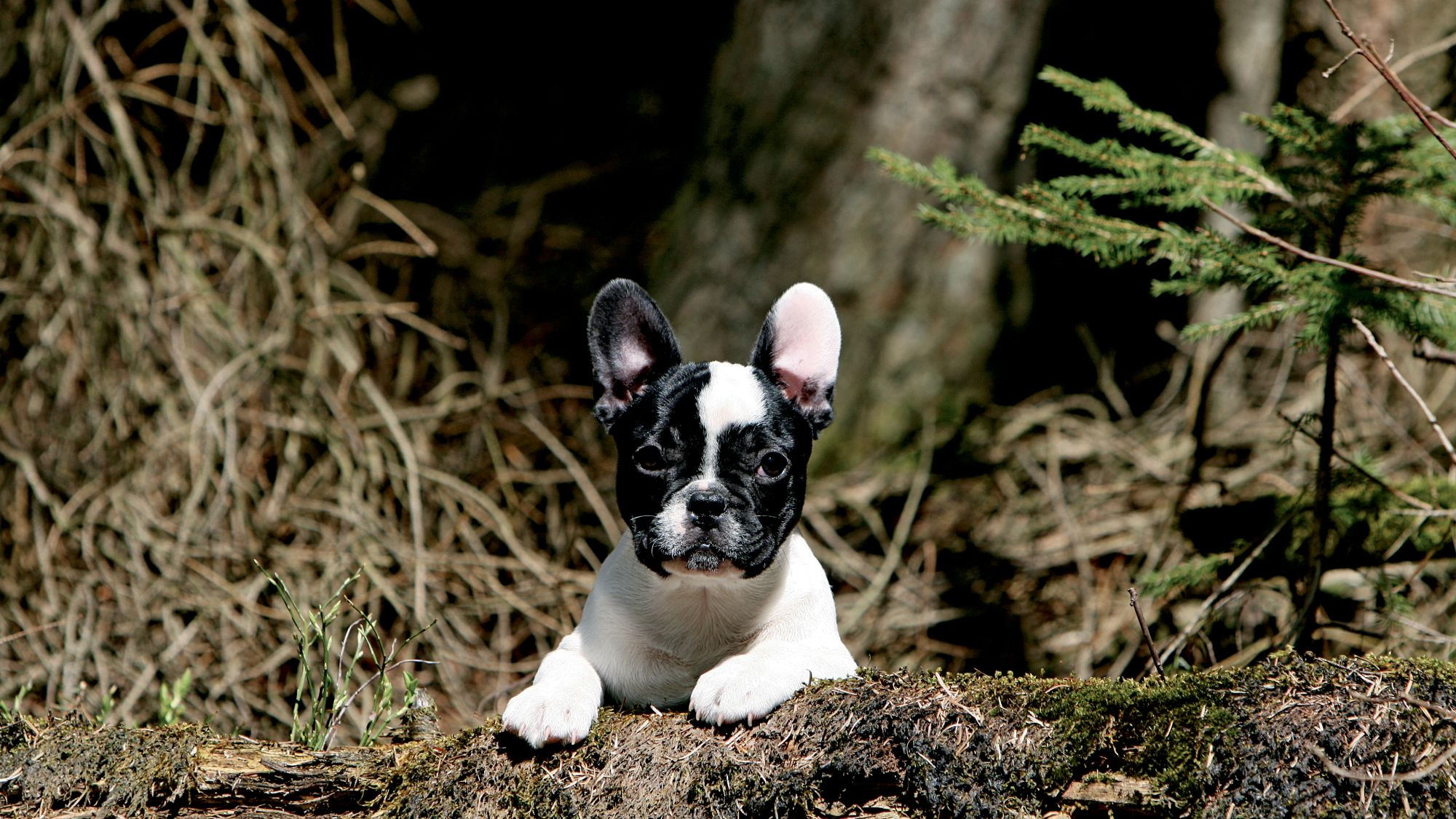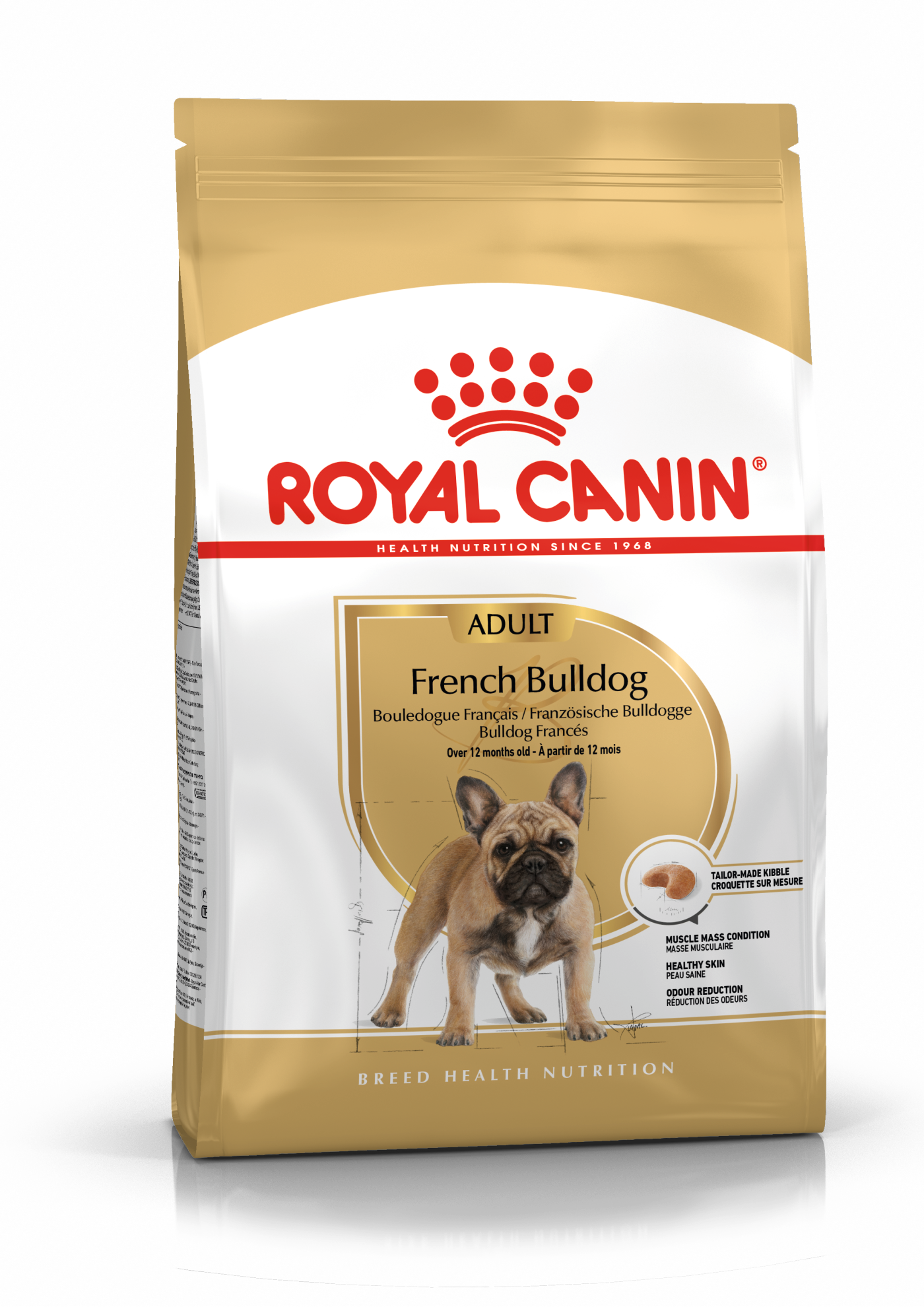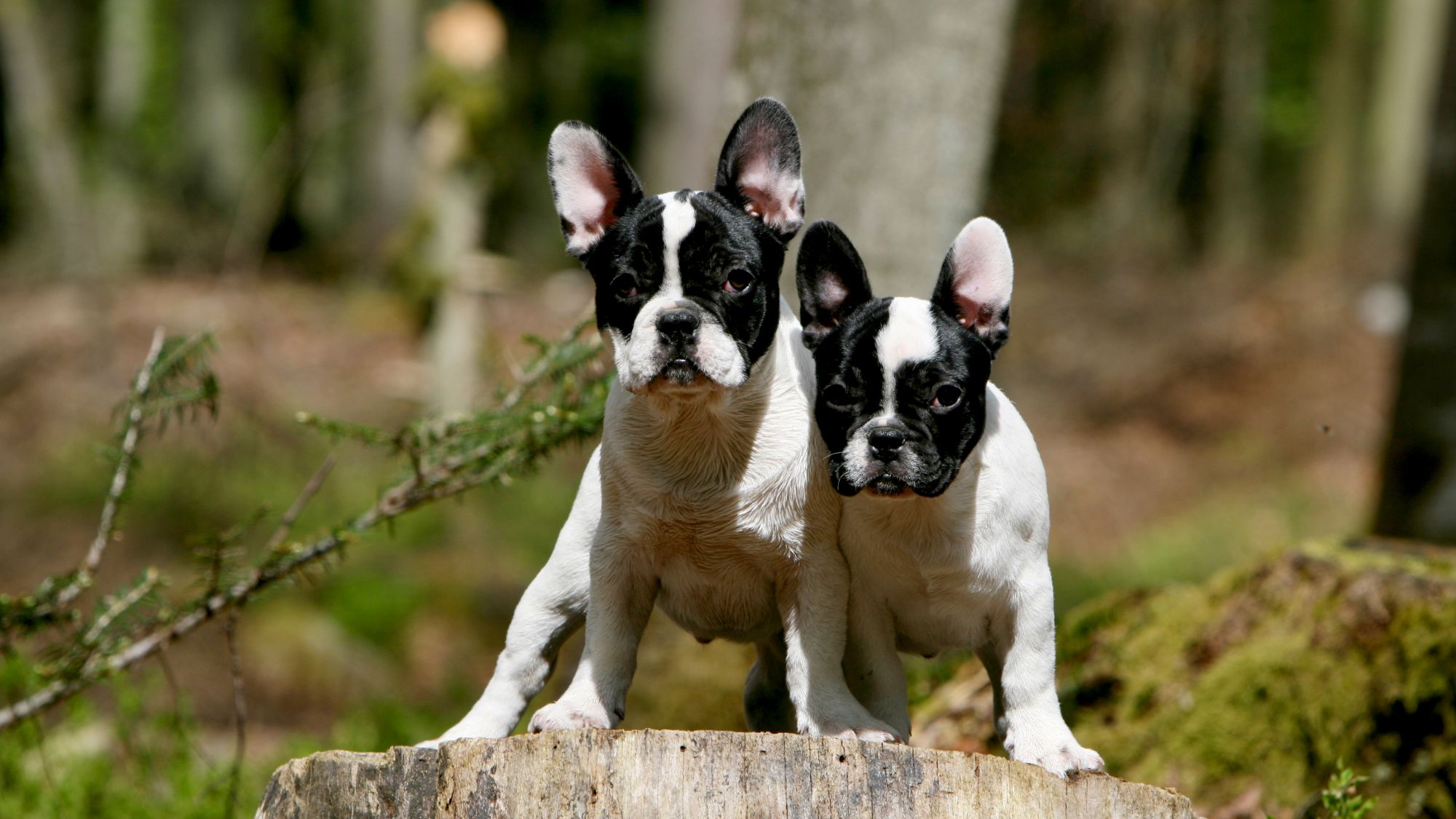| Male | Female |
|---|---|
| Height | Height |
| 27 - 34 cm | 24 - 32 cm |
| Weight | Weight |
| 9 - 14 kg | 8 - 13 kg |
| Life Stage | |
|---|---|
| Puppy age | Adult age |
| 2 to 10 months | 10 months to 8 years |
| Mature age | Senior age |
| 8 years to12 years | From 12 years |
| Baby age | |
| Birth to 2 months | |

Tailored nutrition for your French Bulldog
Get to know the French Bulldog
All you need to know about the breed
The French Bulldog! The darling of Paris has turned the world on its ear and become one of the most popular breeds. They are seventh on the U.K. Kennel Club’s latest rankings, and fourth on those of the American Kennel Club. Their small size makes the French Bulldog a model canine for city dwellers but it’s their affable manner that has made them a universally cherished breed.
Truth be told, the French Bulldog is a really good pet, especially for first-time owners. They’re content just napping by your side (one of their favorite activities), or playing the day away, and are as much at ease with small humans, once trained, as they are with large ones.
The breed’s striking bat-like ears combined with their “grumpy” face are the exact opposite of their jovial personality. When in their presence, you can watch the comedy routine unfold: French Bulldogs are prone to antics.
All joking aside, obedience training for the French Bulldog isn’t a bad idea. Socialisation will be necessary since the breed can be very bonded to their owner. It’s really the French Bulldog’s petite sizemore than anything that makes them a tad dependent on a strong partnership. This is not a dog to be used for rescue or guarding; companionship is their best attribute.

2 facts about French Bulldogs
History of the breed
The French Bulldog history is a long and fascinating one. The breed is thought to have descended from dogs used by the Molossians, an ancient Greek tribe that eventually made its way to England. The Molossian dog is then said to have developed into the English Mastiff and their sub-breed, the Bullenbeisser. After being initially used for the sport of bullbaiting, the breed became more of a companion dog after the sport was rightfully outlawed in 1835.
Terriers, who were found widely in England, were then crossed with the French Bulldog’s ancestor to achieve a mini version or toy Bulldog, where it continued to function as a ratter and guard dog. The early French Bulldog breed became very popular in the central England region of Nottingham, particularly in the lace-making industry, where they were valued for their ability to chase down rodents.
By the 1860s, this new type of French Bulldog breed debuted in dog shows in the country and became very popular. When the lacemaking industry shifted to France following a dip in popularity in England, lacemakers moved to Normandy and brought their dogs with them.
The French Bulldog caught on hugely in the nation, gradually becoming the breed we know today. The dog was highly fashionable and popular with society, particularly the royalty and nobility. They were incredibly celebrated in Paris, and seen widely in cafe life there. The famous French artists Toulouse-Lautrec and Degas often depicted French Bulldogs in their paintings.
The breed gained equal popularity in America in the 20th Century. They were recognised by the American Kennel Club in 1898 and The Kennel Club in England in 1905.
From head to tail
Physical characteristics of French Bulldogs
.
.
.
.
.

Things to look out for
From specific breed traits to a general health overview, here are some interesting facts about your French Bulldog
Healthy diet, healthier dog




Caring for your French Bulldog
Grooming, training and exercise tips
All about French Bulldogs
Read more on this topic
Sources
Like & share this page with your friends & family